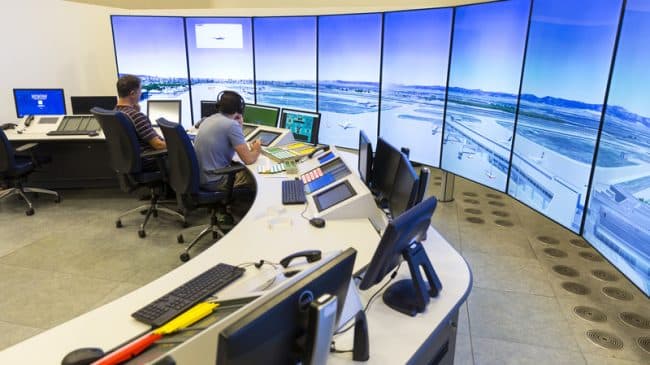Small airports and lawmakers from rural states have expressed great concern about proposals for reform of the air traffic control system, fearing that a cost-conscious air traffic control corporation might eliminate night shifts at control towers, shut down “marginal” towers, or not add such towers at airports that need them.
“I would rather put my eggs in the basket of Congress rather than a 13-member private board making decisions nationwide,” Sen. Jerry Moran (R, KS) told The Hill recently.
To be sure, small airports today face reduced airline service and an FAA moratorium on any additions to the contract tower program (which allows smaller airports to have a control tower at far lower cost than a conventional FAA tower). If and when FAA lifts its moratorium, small airports will only get a tower if FAA determines that its benefits (to FAA and the airspace system) exceed its costs.
But there is another possible future. In a new report, airports expert Steve Van Beek explains that remote towers offer a new alternative for America’s small airports. In contrast to a conventional tall structure with a control cab on top, a remote tower puts the control cab on the ground (at lower cost) and relies on an array of high-tech cameras mounted on one or more tall poles at the airport. Because the cameras include infrared, they provide better views at night, in rain, or in fog than the out-the-window view from a conventional tower. And the controllers’ equipment and displays can include object tracking and alerting, both in the nearby airspace and on the airport surface, increasing safety.
Remote towers are already certified and in operation at small airports in Sweden and Norway, and similar projects are under way in Germany, Ireland, and the United Kingdom. These remote tower projects are being implemented by the ATC corporations of those European countries, as a way to improve and expand tower services.
Unfortunately, the FAA has no remote tower program and has no known plans to develop one. This is ironic since some of the original research on the concept was carried out a decade ago at the FAA Tech Center in Atlantic City. But budget pressures and cost overruns on NextGen programs seem to have precluded any FAA Remote Towers program. There are two pilot projects under way here—one at Leesburg, VA and the other at Loveland, CO—but neither is FAA-funded.
That is tragic because if remote towers were approved for use in this country, they would enable more small airports to qualify for a contract tower, as Van Beek explains in the report. Because of its increased performance in all kinds of weather, the benefits of a remote tower (RT) should exceed those of a conventional tower. And the costs of an RT would generally be significantly lower than a conventional tower. Larger benefits and lower costs mean a higher B/C ratio.
Looking ahead, Van Beek (a former member of the FAA Management Advisory Council) suggests that the likelihood of a funded contract tower program, including remote towers, would be greater if the air traffic system had a reliable revenue stream that could support bonds for modernization (like the bonds airports issue). The FAA Management Advisory Council (MAC) actually recommended that the Air Traffic Organization be converted to a nonprofit entity similar to the European ATC providers that are already implementing remote towers at small airports. And if airports, general aviation, controllers, and regional airlines were part of the governing structure, that could be a workable model.
Van Beek’s full study is here (.pdf): Remote Air Traffic Control Towers: A Better Future for America’s Small Airports.

